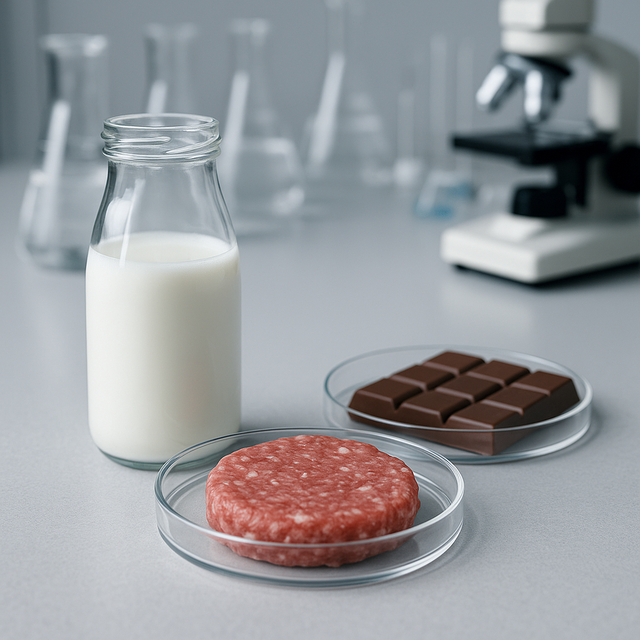
“Lab-grown foods” are not a single technology. Cultured meat (cell growth without growing a whole animal), “cow-free” milk from precision fermentation (microbes that produce proteins identical to those in milk), and alternative cocoa/chocolate (cultured cocoa cells or cocoa-free recipes cultivated through plant fermentation) are emerging as three different paths with the same goal: to reduce the environmental footprint without sacrificing taste. In 2025, these trends are still at different stages of maturity, but have actually entered certain markets.
Do they reduce environmental impact?
The potential is huge, but it depends on energy and processes. Models of meat farming show drastic reductions in land and, if renewable energy is used, greenhouse gas emissions; however, in the short term, under energy-intensive conditions and very clean nutrient media, the footprint could be higher than traditional meat. Simply put: the technology holds great promise, but it requires greener energy supplies and more efficient processes to realize this promise.
In the case of non-cow milk (fermented milk protein), the environmental balance is usually positive: LCAs show strong reductions in greenhouse gases, water and land compared to conventional milk, although there are also estimates that approach the impact of pasture-raised milk when energy supply is unfavorable. So again, energy is the key, not just the factory.
Chocolate is a more pressing case: climate change and disease have driven up cocoa prices and threatened supplies, so the industry is pushing for alternatives that are free of cocoa or made with lab-grown cocoa. These could reduce pressure on rainforests and stabilize the supply chain, provided consumers embrace the taste.
Will the consumer accept the new flavor?
For cultured meat, the perception of “naturalness” and taste remain the main barriers; surveys show that many people still consider traditional meat tastier and “healthier”. For precision-fermented products (cheese/ice cream with identical milk proteins), higher acceptance is observed when communication emphasizes quality and benefits (e.g. “cheese that spreads like regular cheese, but without the cow”) rather than technical terms. This means that marketing language and organoleptic tests are as important as the science.
Where can we realistically find them in 2025?
Cultured meat is licensed for sale in some countries (e.g. USA, Singapore, Australia), but in limited quantities and mainly in pilot contexts (restaurants or controlled partnerships). “Cow-free” milk/cheese from fermentation appears faster in categories such as ice cream, yogurt or processed cheeses – where functional protein makes the difference. In chocolate, the lack of cocoa has pushed investments in cocoa-free and cultured cocoa recipes; we expect them to appear first in cookies, creams, or snacks, where the flavor profile can be balanced with other ingredients.
What does this industry need to gain mass acceptance?
Three things: (1) Taste and price on par with the classic product; (2) clean energy and transparent LCAs that show real environmental benefit; (3) trust – clear labeling, traceability, and involvement of chefs/scientists as “taste ambassadors.” All of this should happen by introducing products where they have organoleptic logic (e.g., cheese that stretches, chocolate without “green taste”) and not as generic replacements.
Yes, lab-grown foods can significantly reduce environmental impact – especially when powered by renewable energy and when processes are optimized. The consumer will accept them if the taste wins, the price stays the same and the communication is honest.





